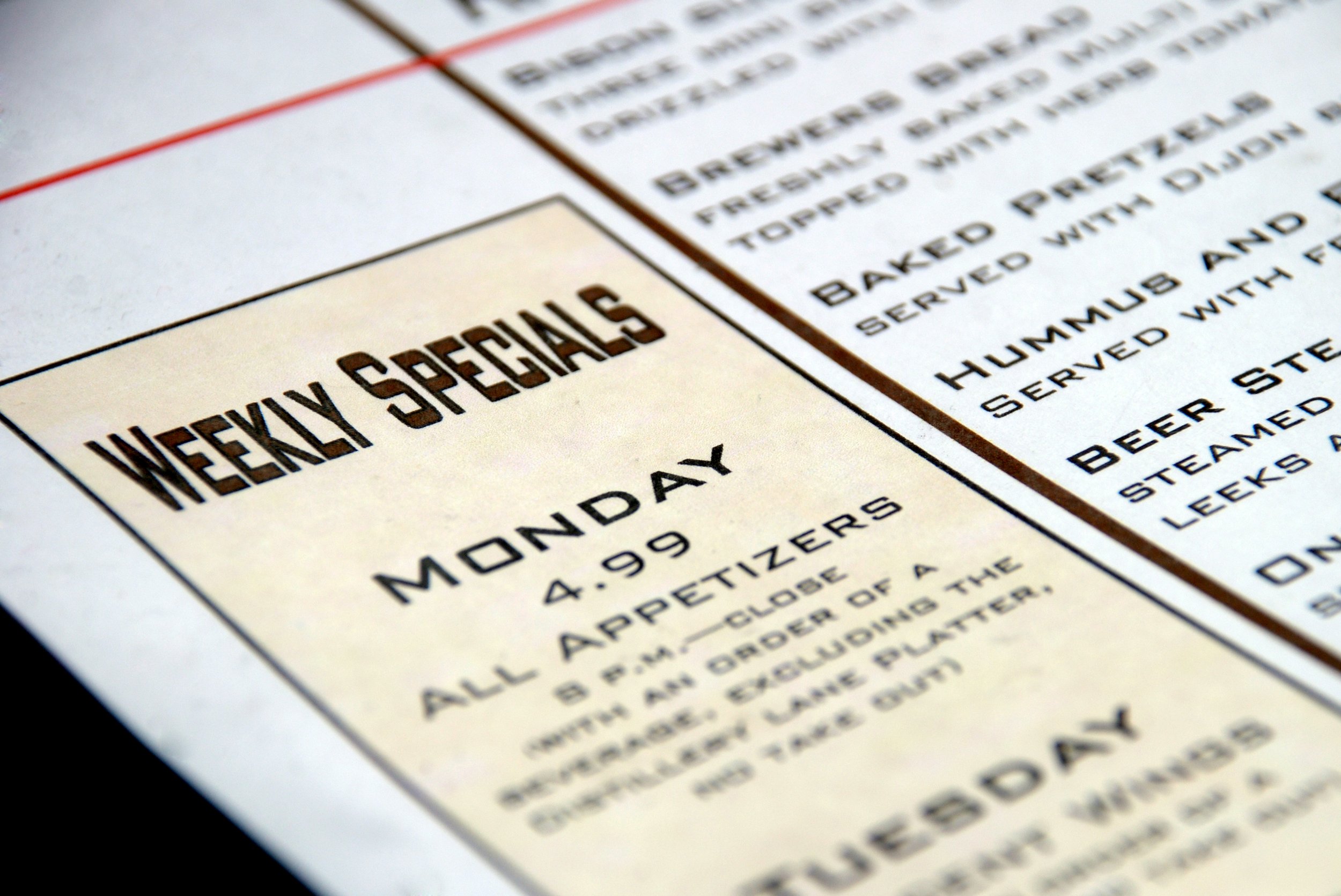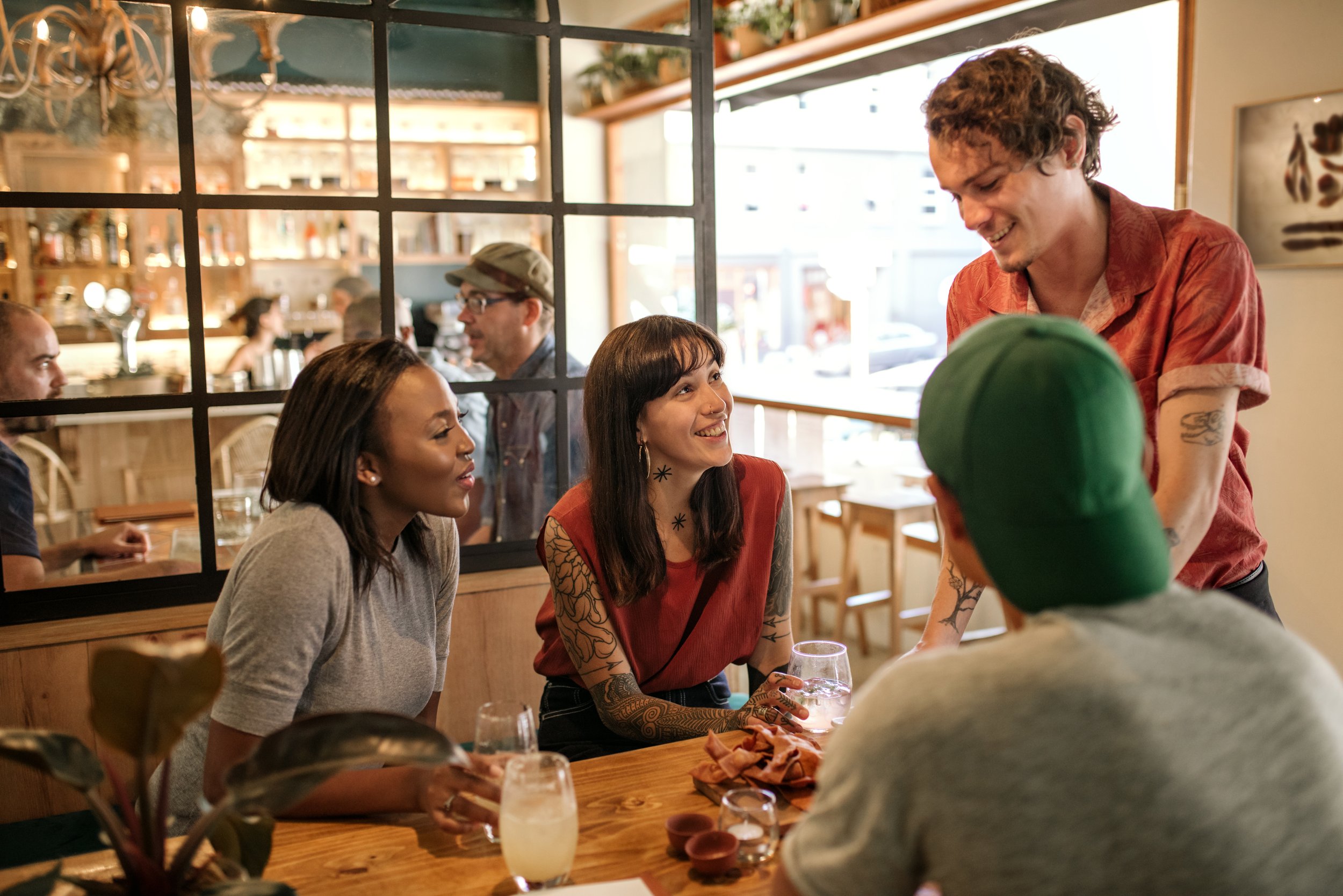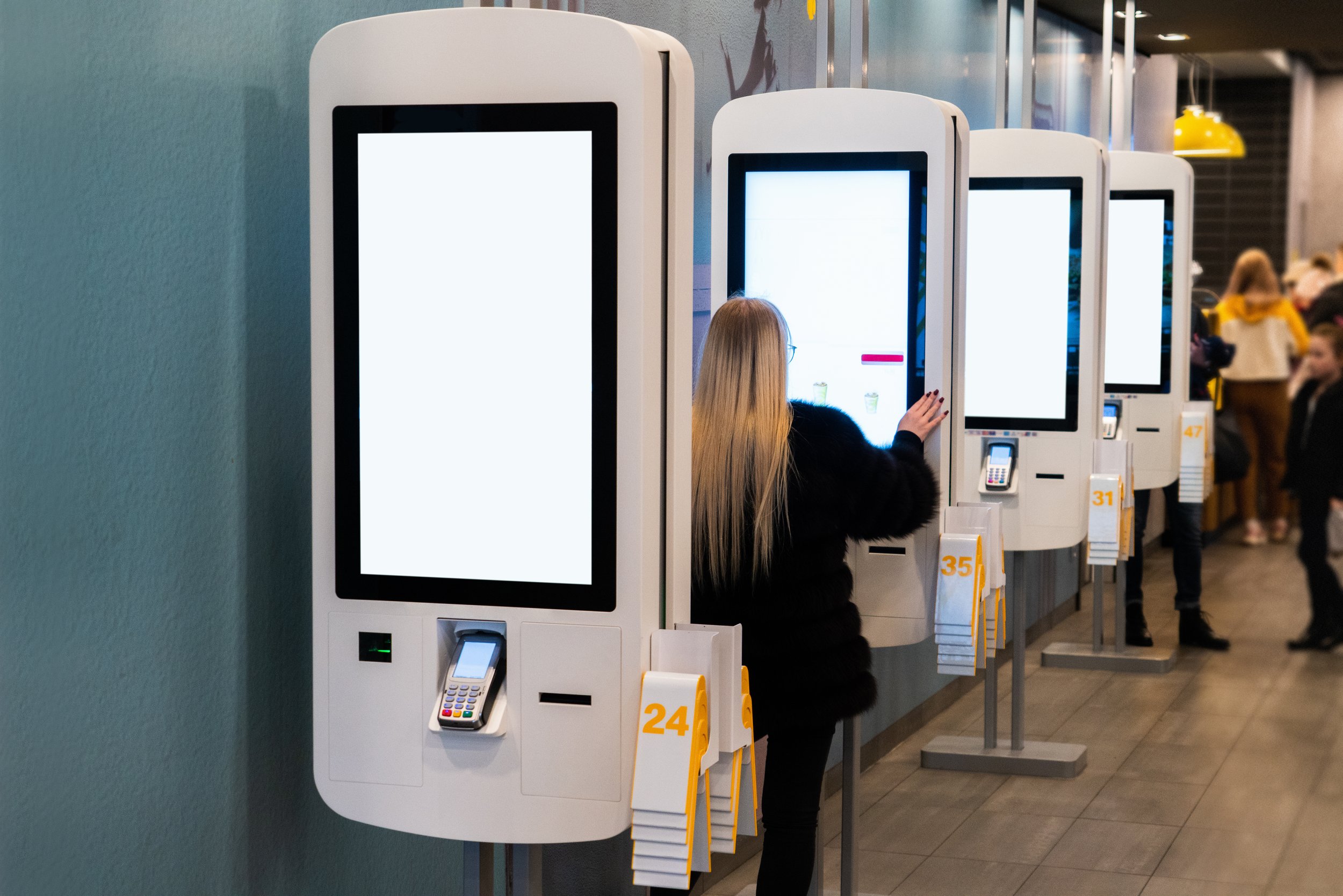Give consumers new ways to experience the human touch.
In last year’s report, we noted that 35% of consumers said they hadn’t eaten a single meal with a close friend or family member in the past week, while 32% said they eat the majority of their meals alone. It’s become such a problem that the Surgeon General declared loneliness and isolation an “epidemic.”
In many ways, the age of screens, tech, and AI — we have reached the point where consumers are having relationships with machines — has only exacerbated the problem. In today’s tech-driven age, is human connection a luxury?
It doesn’t have to be. Food experiences — a dinner with family, a night out on a date or with friends, even just a chat with a server or bartender — have long been core ways that we connect with other humans. At a time when consumers are craving those connections again — when getting out of the house, spending more time with family, and trying new things are top 2025 goals for consumers — there’s a clear opportunity for the food industry to step up.

56% of consumers say seeing the face behind a product (a farmer, a chef) makes them more likely to buy or try it
“In my first few years on the job, I thought of restaurants as one of the few places left where our experiences were completely human. We might work silently in our cubicles, rearranging and transmitting zeros and ones. We might walk around with speakers in our ears that played digital music files chosen by an algorithm. We might buy our books and sweaters and toothpaste with a click and wait until they showed up at our door. We might flirt, fight and make up by text. But when we went out to eat, we were people again.
“No machine could drink rosé for us, or chew lamb chops, or flirt, fight and make up. And at every critical point in the meal, there were people there to guide us. From the moment we walked in, we talked with hosts, bartenders, captains, runners and bussers. Being served in a restaurant wasn’t passive. We had to participate.
“Many of the little routines of dining that we used to handle by talking to a person now happen on a screen. When we go to Shake Shack, we order and pay for our burger and frozen custard on a screen. In some places, we enter our names on the waiting list for tables on a screen. We scan QR codes so we can read the menu on a screen. Restaurants are turning into vending machines with chairs.”
Do consumers prefer tech or humans?
While 59% of consumers say that AI can come up with a recipe that's just as good as what a chef would come up with, 66% would still rather have a dish made by a human chef.
When we asked consumers if they prefer AI or human recommendations for food or restaurants, 64% chose human recommendations, vs. 14% who chose AI.
In a battle between robots and chefs, 71% of consumers said they would rather have an imperfect dish made by a chef than a perfect dish made by a robot.
Human Connection in Action
At Enoteca Maria on Staten Island, a rotating group of grandmothers — or nonnas — run the show. Customers and grandmothers connect over the traditional foods that each nonna shares. “Everybody, they’re kissing me. They wanna make a photograph with me,” [Nonna Maria] Gialanella said. “Everybody say, ‘Oh, I love you, I’ll come again. I wanna see you again.’”
What makes a food or beverage experience more human to consumers?
-

47%
Warm, meaningful interaction with another human person
-

29%
Customization or personalization
-

24%
It’s not the same from one experience to the next
-

24%
So unique a machine couldn’t replicate it
-

24%
A unique origin story
SPACE FOR THE HUMAN TOUCH
How Can You Solve These Hospitality Pet Peeves?
“At a restaurant, if a server forgets to mention when a dish is out of stock, or if the kitchen fails to accommodate a special request like dietary restrictions despite it being communicated at the time of ordering. It can feel like a small but avoidable oversight that impacts the whole dining experience.”
“When they don’t welcome you into their establishment. They don’t say, ‘Hi.’ They don’t say, ‘How can I help you?’”
“When I’m at a restaurant and my glass goes empty and I have to ask for more to drink. I feel as if I’ve been slighted if I have to ask.”
“Being asked how the food is when I’ve got a whole mouthful and I have to mime.”
“Loud unpleasant music, and loud people, and when the lighting is too bright!”
“I hate self-order and self-checkout. I don’t want to work there and if that’s all they have I will walk out and go elsewhere, even if I have to pay more for the same thing.”
“When they require tips. I think that tip culture should end. They should only be paid from their employer. It adds too much pressure on customers.”
“When I walk into a place and am greeted with indifference or coldness by staff it’s like an instant mood killer.”
“A lack of attention to detail. For example, when servers forget to fill water glasses or when hotel rooms aren’t stocked with the essentials.”
“Walking into a business prepared to spend my money and nobody acknowledges my presence. There’s no greeting or customer service or anything.”
“Long wait times without updates. It’s frustrating when you’re left waiting with no communication from staff about the delay.”

87% of consumers find it meaningful when a restaurant recognizes their preferences and recommends dishes.
Ten connection thought-starters for the year ahead
How can your brand be a connection point where people discuss, learn, and make new friendships?
Can you develop new, more meaningful ways for your organization to connect with your customers?
What are some dishes or products that you can develop that consumers want to share?
How can you infuse more frequent, smaller personal touches into your customer’s experience?
What is the next generation of the “third place” designed to bring people together?
How do you foster multigenerational connections?
How do you create physical spaces that create more opportunities for connection?
How can you make a customer’s initial contact with your brand as welcoming as possible?
Can you create new connection points that balance out those human touches lost through tech adoption?
How do you foster meaningful connection internally at your organization?



